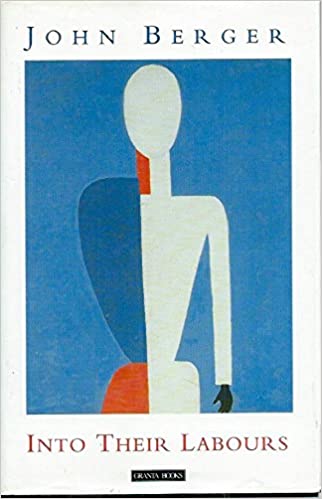 ‘My people are the poor ones
‘My people are the poor ones
their country made of stones
Their wealth is in persistance,
in stories and in bones…
– Oysterband, “One Green Hill”
Between 1979, when he wrote Pig Earth, the first volume of what was to become the Into Their Labours trilogy, and 1990 when the last volume of the series, Lilac and Flag, was released (the middle volume was the 1983 volume Once in Europa), noted art critic John Berger lovingly documented the lives of the peasants of the small peasant French Alps village into which he moved some thirty years ago. This trilogy is neither fiction nor non-fiiction, but a brillant merging of both.
Berger has assigned himself the odd undertaking of moving to this small village to extract the details of the village life and collect the old wives’ tales of those peasants. This is a very graphic novel – Pig Earth opens with the slaughter of a cow in exceedingly grim detail. Make no mistake – this is about all aspects of peasantry, both heartbreaking and joyous, both grim and uplifting. This world is as alien to us as the most fantastic science fiction story – and yet hits close to home for many of us, since it reflects the peasant cultures from which many of our ancestors sprang some generations ago.
The old wives’ tales, the re-tellings of stories so old that no one remembers who first told them, are the heart of the Into Their Labours trilogy. One cannot tell where the tales being told by the peasants begin and end, and where the fiction created by Berger begins. People fall in love, fight over trivial matters, go hunting, do all the tasks associated with daily life in a small village, and eventually die. But the culture into which the peasants are born goes on generation after generation. Death is just part of the natural cycle of things in the peasants’ barely changing world.
Pig Earth leads off the trilogy by recreating the small, almost claustrophobic reality of peasants living in an Alpine French village where everyone knows everyone else’s business. The old wives’ tales are both comforting and oppressive to the villagers. Old Jean may be the the old maid in the garret who has reached the age of thirty without being courted or married (which everyone knows), but she’s our Old Jean. Tomas may be a lousy violinist, but at least he’s willing to play at weddings on the shortest of notice (often held just before the bride starts to show). The neverending cycle of retold tales respects the old ways while allowing access to new ideas that add to the body of folkloric knowledge. In this culture, change is good so long as it doesn’t change much.
But the center, as W. B. Yeats noted in his poem “Slouching Towards Bethlehem,” cannot hold. The old ways that held their ancestors to the earth – and ended with them becoming part of that cold, hard earth – fail to keep the young from leaving for the cities. Once in Europa documents the story of a star-crossed young couple forced to flee the village for the city. They find both joy and misery in the city of Troy, but their children in Lilac and Flag, the final volume of the trilogy, know nothing of the world their primogenitors left behind – they know only the harsh urban realities of their birthplace.
Intentionally or not, Berger emulated a form of writing created by Emile Zola called fiction naturalism. Emile Zola wrote a series of 20 novels between 1871 and 1893, under the generic title Les Rougon-Macquart, to illustrate his literary concepts in terms of the saga of one family. His handiwork was a complete image of French life, particularly of Paris, in the late 19th century. Zola’s epic undertaking was strikingly similar to Berger’s in that, in part, it traced the movement of the peasants from the rural regions of France to the great city of Paris. It cannot be said with certainty that Berger’s fictional city of Troy is modeled on Paris but it is a reasonable supposition that it is. What can be stated is that Berger and Zola share a unique genius for narrative, and the power to use words to bring life to a feast, a shop, a marketplace, or a salon. Both Berger and Zola are better at bringing to life these collective settings than developing the individual characters in their novels.
This is not easy reading, as it will challenge the reader to think about what it means to be an individual in a culture where tradition holds sway over every aspect of those living there. Berger considers himself a storyteller not a novelist, and the Into Their Labours trilogy does read more like a series of interconnected tales, so pick this trilogy up and read it at your leisure as the cold winds blow outside your home – and remember that, as one teller of tales has commented, “Now as the last broad oak leaf falls, we beg: consider this – there’s some who have no coin to save for turkey, wine or gifts. No children’s laughter round the fire, no family left to know.” The peasants of the Into Their Labours trilogy are not in the end a happy lot. Nor do they know their roots. Consider this trilogy a dose of needed reality that tells us what being a peasant, in a small village or the big city, is really like.
(Pantheon, 1992)
